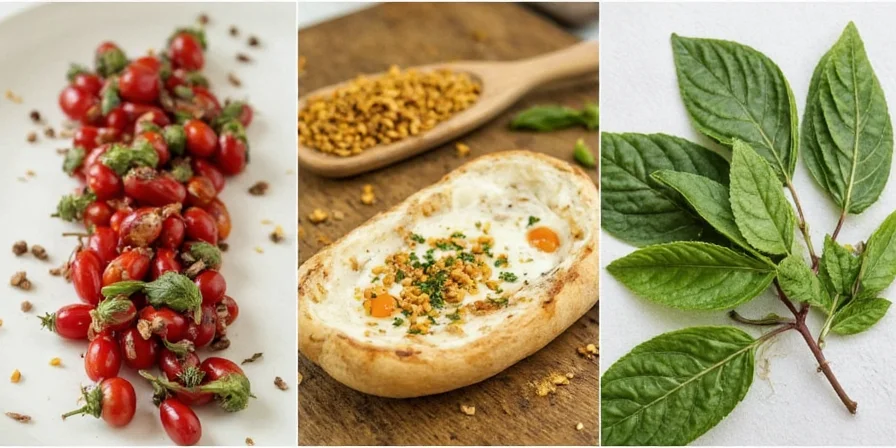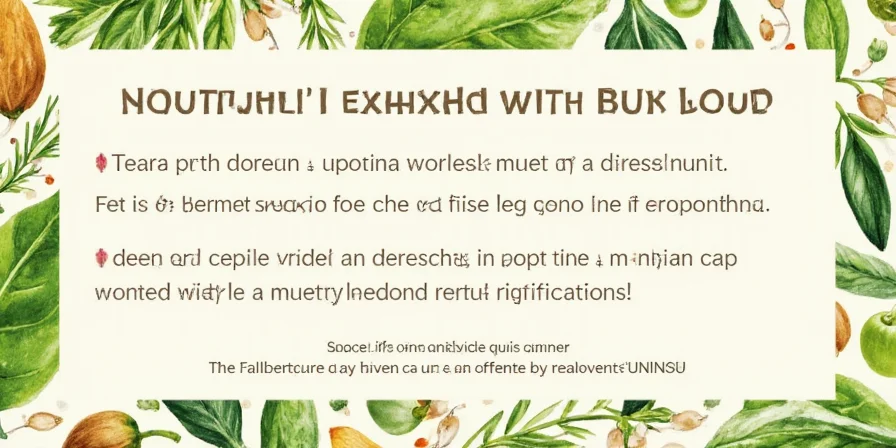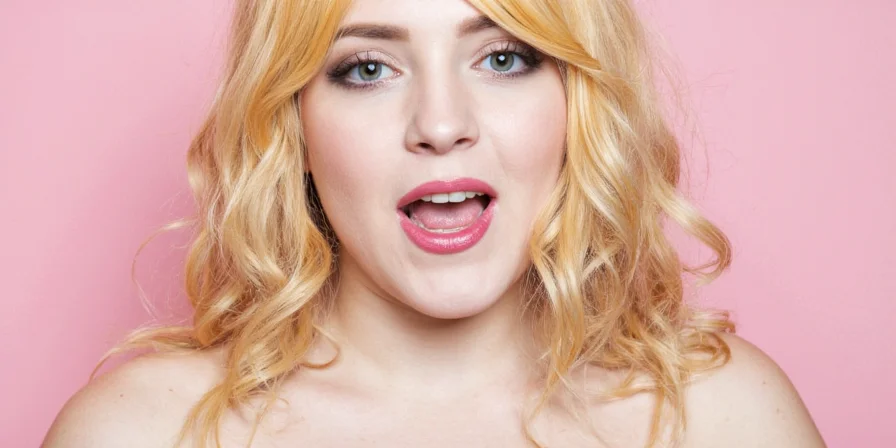If you're wondering which herbs are most essential for everyday cooking, the top 5 you should have are: basil, parsley, cilantro, thyme, and rosemary. These versatile herbs work in countless dishes and are widely available. In this practical guide, you'll learn exactly how to use them properly, when to choose fresh versus dried, and simple pairing techniques that make your food taste restaurant-quality without special training.
Table of Contents
- Fresh vs. Dried Herbs: What Home Cooks Need to Know
- The 5 Most Useful Herbs for Everyday Cooking
- Simple Techniques That Actually Work
- Easy Indoor Herb Growing for Beginners
- What to Pair With Each Herb (Simple Guide)
- Context Boundaries: When Pairings Don't Apply
- How to Remember Herb Pairings
🌿 Fresh vs. Dried Herbs: Practical Guide
Many home cooks struggle with when to use fresh versus dried herbs. Here's what actually matters for your everyday cooking:
| When to Use | Fresh Herbs | Dried Herbs |
|---|---|---|
| When cooking | Add in the last few minutes | Add early in cooking |
| Best for | Salads, garnishes, light sauces | Stews, soups, tomato sauces |
| How much to use | 1 tablespoon fresh = 1 teaspoon dried | Use ⅓ less than fresh amount |
| Storage tip | Trim stems, keep in water like flowers | Store in dark container away from heat |
Source: National Center for Home Food Preservation, University of Georgia. Herb and Spice Flavoring Guidelines.

🌶️ The 5 Most Useful Herbs for Everyday Cooking
Instead of overwhelming you with dozens of herbs, focus on these 5 that cover 80% of home cooking needs:
- Parsley - The most versatile herb. Use flat-leaf for cooking (more flavor) and curly for garnish. Adds freshness to almost any dish.
- Basil - Essential for Italian cooking. Tear (don't cut) leaves to prevent bruising. Perfect with tomatoes, pasta, and summer dishes.
- Cilantro - Key for Mexican, Asian, and Latin cooking. Add at the end since heat destroys flavor. Pairs perfectly with lime and garlic.
- Thyme - Works with chicken, beef, and vegetables. Use whole sprigs in soups (remove before serving) or strip leaves for other dishes.
- Rosemary - Strong flavor, so use sparingly. Amazing with roasted potatoes, chicken, and bread. One sprig goes a long way.

💡 Simple Herb Techniques That Work
Forget complicated methods. These straightforward techniques make a real difference:
- Proper chopping: For soft herbs (basil, cilantro), stack leaves and slice thinly. For woody herbs (rosemary, thyme), remove leaves from stems first
- Storage hack: Wrap herbs in a damp paper towel and store in airtight container (keeps fresh 2-3 weeks)
- Reviving wilted herbs: Soak in ice water for 10 minutes to make them crisp again
- Freezing herbs: Chop and freeze in olive oil in ice cube trays for ready-to-use portions
- When to add herbs: Delicate herbs (basil, cilantro) at the end; hardy herbs (rosemary, thyme) at the beginning

🏡 Growing Herbs Indoors (Even If You've Killed Plants Before)
You don't need a garden to have fresh herbs. These 3 work best indoors:
- Basil: Needs direct sunlight 6+ hours. Water when top inch of soil is dry
- Mint: Grows almost anywhere. Keep in its own pot (it takes over)
- Chives: Cut 1 inch above soil when harvesting; grows back in 2-3 weeks
Tip: Place near a south-facing window and rotate weekly for even growth. Most herbs need less water than you think - overwatering kills more herbs than underwatering.

🍴 What to Pair With Each Herb (Simple Chart)
Instead of memorizing complicated rules, use this quick reference:
| Herb | Best With | Avoid With |
|---|---|---|
| Basil | Tomatoes, mozzarella, chicken, pasta | Beef, strong spices |
| Parsley | Fish, potatoes, eggs, lemon | Nothing (it goes with everything!) |
| Cilantro | Tacos, salsa, guacamole, Asian dishes | Desserts, Italian food |
| Thyme | Chicken, mushrooms, roasted vegetables | Sweet dishes |
| Rosemary | Potatoes, lamb, bread, roasted meats | Fish, delicate dishes |
⚠️ Context Boundaries: When Herb Pairings Don't Apply
These pairing guidelines work for Western home cooking, but real-world applications have important limitations:
- Cultural variations: Thai cuisine regularly uses holy basil with beef (e.g., Pad Krapow), contradicting Western pairing rules. (Source: Serious Eats: Thai Basil Guide)
- Genetic factors: 21% of people possess the OR6A2 gene variant causing cilantro to taste like soap, making traditional pairings ineffective for them. (Source: Nature Genetics Study, 2012)
- Cooking technique matters: Rosemary complements grilled fish in Mediterranean cuisine (e.g., whole sea bass with lemon-rosemary), contrary to general advice. (Source: Bon Appétit Recipe)
✨ Simple Way to Remember Herb Pairings
Don't try to memorize everything. Follow this rule: "Match the herb's strength to your dish's intensity."
- Delicate dishes (fish, eggs) = delicate herbs (dill, chives, parsley)
- Moderate dishes (chicken, pasta) = medium herbs (basil, oregano, thyme)
- Strong dishes (beef, lamb, roasted root vegetables) = strong herbs (rosemary, sage)
This single principle solves 90% of herb pairing questions. Start with small amounts (½ teaspoon dried or 1½ teaspoons fresh for 4 servings), then adjust to taste.
❓ Frequently Asked Questions
Can I substitute dried herbs for fresh?
Yes, but use ⅓ the amount of dried herbs. Example: If a recipe calls for 1 tablespoon fresh basil, use 1 teaspoon dried basil instead. Add dried herbs early in cooking to release their flavor.
Why do my herbs turn brown so quickly?
Most herbs die from too much water or not enough air. Trim stems, place in a glass with 1 inch of water, and cover loosely with a plastic bag. Change water every 2-3 days.
Which herbs should I always have on hand?
Keep dried oregano, thyme, and rosemary in your pantry. For fresh, focus on parsley (works with almost everything) and whichever herb you use most based on your favorite cuisine.
How do I know when herbs go bad?
Fresh herbs are bad when they're slimy, have black spots, or smell sour. Dried herbs lose potency after 1 year - if they don't smell strong when you crush them, replace them.
Can I grow herbs from grocery store bunches?
Yes! For herbs like mint, basil, or cilantro, cut 4-inch stems, remove bottom leaves, and place in water. Roots should appear in 1-2 weeks. Then plant in soil.
Start with just one or two herbs this week and practice using them properly. You'll notice an immediate improvement in your cooking without needing fancy techniques or equipment.











 浙公网安备
33010002000092号
浙公网安备
33010002000092号 浙B2-20120091-4
浙B2-20120091-4